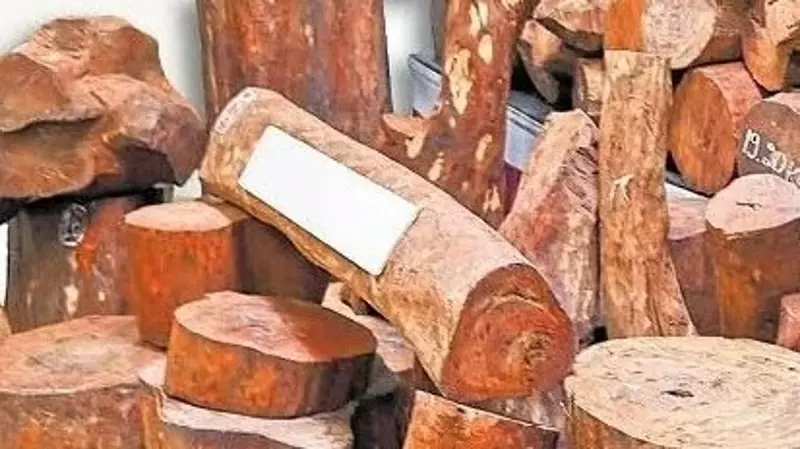
The dense forests of Andhra Pradesh's Seshachalam Hills are witnessing an environmental crime of massive proportions. Red Sanders, the precious red sandalwood species endemic to this region, has become the target of a sophisticated international smuggling network that spans continents and generates billions in illegal revenue.
The Red Gold Rush in Eastern Ghats
For decades, organized criminal groups have been systematically plundering Red Sanders trees from the protected forest areas of Andhra Pradesh. This rare tree species, scientifically known as Pterocarpus santalinus, grows exclusively in the tropical dry deciduous forests of the Eastern Ghats. The wood's value in international markets ranges between Rs 50 lakh to Rs 2 crore per tonne, making it more valuable than many precious metals.
According to enforcement agencies, the smuggling operation follows a well-established pattern. Local tribes and impoverished communities are recruited by middlemen to venture deep into protected forests. These woodcutters risk their lives and freedom to illegally fell the slow-growing trees, which take 20-25 years to mature and develop the characteristic deep red hue that makes them so valuable.
Global Network and Shipping Routes
The smuggling network operates with remarkable sophistication. Once the wood is harvested, it's transported through complex routes to major Indian ports including Chennai, Visakhapatnam, and Kolkata. From there, concealed in shipping containers declared as other commodities, the precious wood begins its journey to international markets.
China remains the largest market for Red Sanders, where the wood is highly prized for traditional furniture, medicinal purposes, and as a status symbol. Other significant markets include Singapore, Malaysia, Hong Kong, and the United Arab Emirates. The enforcement data reveals that between 2020 and 2024, authorities seized Red Sanders worth over Rs 500 crore and arrested hundreds of individuals involved in the trade.
Conservation Status and Legal Framework
Red Sanders enjoys the highest level of protection under Indian and international law. The species is listed in Appendix II of CITES (Convention on International Trade in Endangered Species), which strictly regulates its international trade. Domestically, it's protected under Schedule IV of the Wildlife Protection Act, 1972.
Despite this robust legal framework, enforcement remains challenging. The Andhra Pradesh Forest Department has established special task forces and conducted numerous anti-smuggling operations. In one significant operation, authorities seized 217 tonnes of Red Sanders worth approximately Rs 150 crore from a single location, highlighting the massive scale of the illegal trade.
The economic impact extends beyond immediate environmental damage. The illegal trade deprives the Indian exchequer of significant revenue while funding other criminal activities. Experts estimate that the total value of the illegal Red Sanders trade could exceed Rs 5,000 crore annually, making it one of India's most lucrative environmental crimes.
Way Forward and Conservation Efforts
Addressing the Red Sanders crisis requires a multi-pronged approach. Enhanced surveillance using drone technology, better intelligence gathering, and stronger international cooperation are essential components. The Andhra Pradesh government has also initiated community engagement programs to provide alternative livelihoods for vulnerable populations who might otherwise join smuggling operations.
Conservationists emphasize that protecting Red Sanders is not just about preserving a tree species but about safeguarding an entire ecosystem. The Seshachalam Hills biosphere supports diverse flora and fauna, and the removal of Red Sanders trees disrupts this delicate ecological balance. As enforcement agencies intensify their efforts, the battle to save India's red gold continues on multiple fronts.





